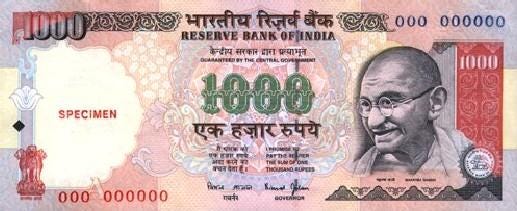How the Israel Iran War Impacts India’s Economy
While the rise in crude oil prices weakens the Indian Rupee, it may lift demand for Indian labor in the Middle East Countries
June 14, 2025
India is heavily dependent on imports for its energy consumption: it imports nearly 90% of its 6.5 million barrels per day (mbd) of crude oil; two thirds of its 36 million tons of annual liquefied petroleum gas (LPG); and about half of its annual 72 billion cubic meters natural gas, in the form of liquefied natural gas (LNG).
The rise and decline in the prices of these commodities, especially crude, impacts India’s trade deficit and hence the value of the Rupee. In early May this year, for instance, the price of benchmark Brent crude oil futures dropped to around $60 a barrel, from a recent high of $82 in January. In lock step, in May, the Indian Rupee strengthened against the U.S. dollar: $1 was worth Rs. 84, up from Rs. 88 to the dollar three months earlier.
Over the past two weeks, the price of crude futures has spiked by 20% to around $74 a barrel. This was initially due to media reports anticipating, and then, last week, the start of the Israel Iran war. If crude price continues to rise, and stays well above $80 for the rest of 2025, it will raise India’s foreign trade deficit. The Rupee has already weakened: Rs. 86 to $1 currently.
This year, India is forecast to import 5.7 mbd of crude, 24 million tons of LPG, and, according to the International Energy Agency, more than 36 billion cubic meters of LNG. LPG is used mainly as cooking fuel by consumers, while LNG is used mainly for distribution to consumers in big cities, industry, and refineries.
In fiscal year 2024-25, India spent $137 billion on crude imports and around $36 billion on LNG and LPG imports. The average price of crude was $81 per barrel in 2024.
If crude oil prices rise and stay above $85 per barrel, for the rest of the current fiscal year, India’s energy import bill will rise, compared to last year. This would boost India’s foreign trade deficit, which was $283 billion last year. The country’s foreign exchange reserves is currently $697 billion.
India’s trade with Israel is about three times larger than its trade with Iran. More than half of India’s total $4.5 billion exports to Israel, in fiscal year 2023-24, was petroleum products.
While not large, at least in officially reported figures, India’s most critical imports from Israel are arms and ammunition and related parts. They accounted for around $150 million of the $2 billion imports from Israel in fiscal year 2023-24, according to official figures. “India is the largest buyer of military equipment from Israel, which, in turn, is the second largest defence supplier to India, after Russia,” according to India Brand Equity Foundation, a trust established by the Government of India, as a knowledge centre for global investors, international policy-makers and world media.
Israel has supplied India with “sophisticated missile systems, drones, radar systems, and electronic warfare tools,” according to Isra-Tech. “The Indian armed forces have relied on Israeli expertise in areas such as surveillance, intelligence gathering, and border security…Israeli defense firms have partnered with Indian companies to establish joint ventures and manufacturing units in India…”
Up until 2019, India was a major importer of crude oil and related products from Iran. In fiscal year 2018-19, such imports by India accounted for $12 billion, or nearly two thirds of the bilateral trade between the two countries. Since May 2019, the trade between them has shrunk rapidly, following the expiry of the oil import sanction waver granted to India by the United States. Currently the annual bilateral trade between India and Iran is around $2 billion.
In fiscal year 2023, India’s top exports to Iran were food items: rice ($734 million), soybean meal ($97 million), and bananas ($52 million). Imports from Iran included acyclic alcohol derivatives ($309 million), LPG ($126 million), and petroleum coke ($118 million).
In February this year, four Indian companies were reportedly among more than 30 companies, vessels, and individuals worldwide, who were sanctioned by the United States government, including for their alleged involvement in the trade and transportation of Iranian crude oil and petroleum products. The Indian companies sanctioned, according to the New Indian Express, include Austenship Management, BSM Marine, Cosmos Lines, and Flux Maritime.
The rise in the prices of crude oil, LPG and LNG, following the Israel Iran war, benefits the exporting countries in the Middle East. This may lift demand for migrant Indian labor in the United Arab Emirates, Saudi Arabia, Kuwait, Qatar, and the other countries in the region. There are currently nine million Indians, mostly semi-skilled and unskilled laborers, working in those countries. Typically, as their export incomes rise, with rising prices of crude oil, employers in the Middle East countries hire more labor, including from India, as they expand construction and other projects as well as for domestic help.
Remittances by Indian migrant labor in the Middle East is a major source of income for millions of families in India, especially in Kerala. About ten percent of the state’s 35 million population are employed in the Middle East. Their foreign remittances accounts for a fifth of Kerala’s income.


